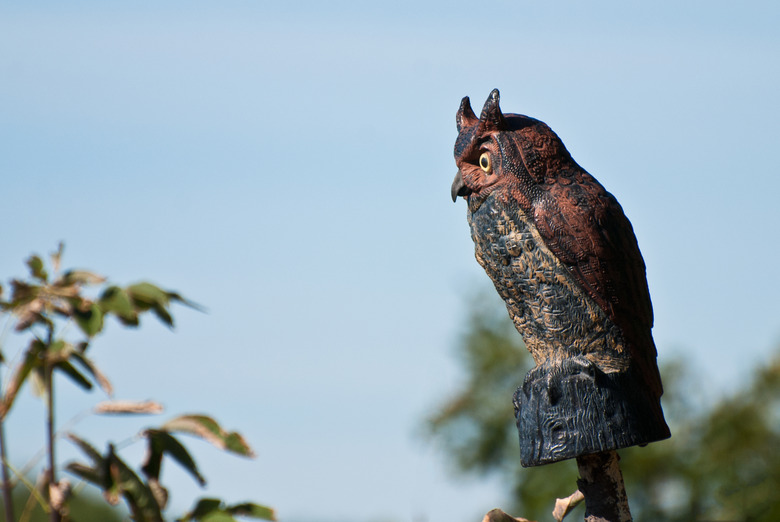How Does A Fake Owl Work To Scare Birds Away?
There's no need to doubt that putting a fake owl in your yard will deter birds because a study has confirmed it. The study was conducted at Linfield College in Oregon, and it concluded that fake owls were effective bird deterrents but only for a limited time. The strategy works because owls are natural predators of songbirds. Cornell University also reports that plastic owls deter birds – specifically woodpeckers – but that deterrence lasts for only a few days.
Owls Are Deadly, but Birds Are Smart
Owls Are Deadly, but Birds Are Smart
To a human being, the sight of an owl with its piercing gaze and formidable size is impressive, but to a bird, it must be terrifying. Owls have special feathers on their wings to mute the sound of flapping, and they are daring flyers, sometimes attacking directly from above in a dead drop. So the sight of an owl is a definite incentive for a bird to go the other way.
Birds are canny enough, however, to be able to distinguish a decoy from the real thing, especially when there is food to be had. One person reviewing the effectiveness of a particular plastic owl reports that it took about four days for pigeons to figure out that it wasn't real and to feast comfortably on seeds within 4 to 5 meters (about 13 to 16 feet) of the decoy. This particular plastic owl even had a moving head, but that wasn't enough to convince the birds that it wasn't real. An expert writing for Wildlife Removal Blog assures readers that, in most cases, pigeons quickly figure out that plastic owls aren't real.
Improving the Effectiveness of Decoy Owls
Improving the Effectiveness of Decoy Owls
Plastic owls are more effective deterring some species of birds than others. The Linfield College study found that the owl was far more effective against the black-capped chickadee than it was against the red-breasted nuthatch.
Anyone committed to deterring birds with a plastic owl can try a few tricks to make the owl more effective:
- Place the owl in a tree or some other natural setting. Owls don't like to be seen, so the sight of one perched on a ledge or rooftop is a dead giveaway.
- Change the owl's position every few days. An owl that stays in the same place for weeks on end is another dead giveaway.
- Hang old CDs or ribbons from tree branches or eaves to add to the birds' confusion.
- Deploy an inexpensive sound device that makes a loud sound at random intervals to further confuse the birds.
In the case of pigeons, some kind of physical barrier, such as pigeon spikes, are necessary to prevent pigeons from roosting and doing their dirty work.
Cite This Article
MLA
Deziel, Chris. "How Does A Fake Owl Work To Scare Birds Away?" sciencing.com, https://www.sciencing.com/owl-work-scare-birds-away-4913851/. 13 March 2018.
APA
Deziel, Chris. (2018, March 13). How Does A Fake Owl Work To Scare Birds Away?. sciencing.com. Retrieved from https://www.sciencing.com/owl-work-scare-birds-away-4913851/
Chicago
Deziel, Chris. How Does A Fake Owl Work To Scare Birds Away? last modified March 24, 2022. https://www.sciencing.com/owl-work-scare-birds-away-4913851/
